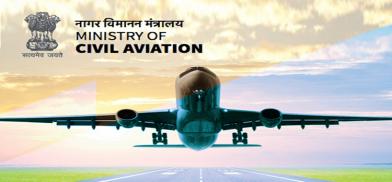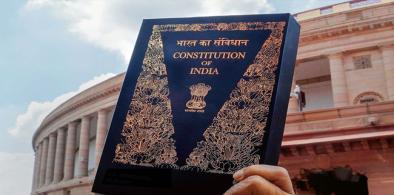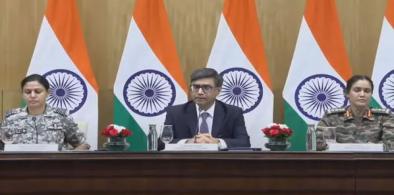How to prevent foggy disasters at Delhi airport
The problem each year repeats like the weather itself, simply because of the awful behaviour of the airline ground staff. Our airline ground staff are perhaps the worst amongst developing/developed nations.

Indian Civil Aviation Minister Jyotiraditya Scindia has announced an SOP for flight operations and related activities for smooth and trouble-free operations during the poor visibility period in Delhi, which prevails for about 45 days from about Christmas till early February each year. Will that resolve the issue of enormous troubles faced by passengers?
Every winter it is the same old story. Long delays, frayed tempers. But the recent act of frayed temper reaching the cockpit, wherein a frustrated passenger punched the captain of the aircraft, is perhaps a warning signal of a disaster waiting to happen. It must be contained.
Pilot training and the fear factor
Without indulging in blame games, the issue has to be analysed pragmatically. First the operators;
Unfortunately, operators continue to fail the passengers by not sharing actual information. Operators involve not only the airlines but the entire administrative set up viz. Air Traffic Control, ground support organization, and the agency responsible for waiting for passenger comfort. The controlling agency Directorate General of Civil Aviation (DGCA) only adds to the confusion. One such example is quoted below;
Appalling decision taken during the 2005-06 winter season after two days of fog on December 24-25 read something like this: "All airlines must train their pilots to be ready to land in severe foggy conditions by next winter, failing which the concerned airline shall not be allowed to operate from Indira Gandhi International Airport (IGIA) in Delhi during winter months. As quoted in the media, these were the directions issued by the aviation secretary.
The senior official must have given such directions only after being briefed by an ‘irresponsible and carefree/careless’ expert from the DGCA. Was/is such order executable in letter and spirit? Would all airlines have the pilots ready and trained to be able to take off and more importantly land in near zero or for that matter 200 meter visibility?
Let us examine a few facts. IGIA experiences near ZERO VISIBILITY conditions for about 15 days during the critical period. However such conditions occur in periods of 2-3 days at a time, which implies that every winter there are about five such critical windows. The normal pattern is visibility deterioration that begins around 2200 hours and continues till 1000 hrs the next day. Such a weather pattern does not occur anywhere else in India from where major airline operations take place e.g. Mumbai, Chennai, Kolkata, Bangalore, Pune, Trivandrum, Nagpur, Gauhati, Tezpur, Indore etc.
A word about the ‘magic wand’ CAT III ILS. Even for a CAT III ILS (instrument landing system) qualified pilot, the minimum requirement of visibility to land is 125 meters. A word about training the crew to land safely under such acute poor visibility conditions. While all airlines train their crews on simulators regularly, the actual landing under such conditions is quite different from doing so on a simulator. It must be understood that simulator training only complements the expertise and in no way is a substitute for landing under actual conditions.
The issue will be best explained/understood by a simple example. An average human being requires about 18 inch width to walk straight provided he/she is not in an inebriated state. Now just raise the 18-inch platform to say 50 feet. How many takers shall be there? None. Why? That is because the fear factor has come in. The same thing applies to a pilot attempting to land in actual conditions, although he/she may be landing employing an ILS approach every day but in good or fair visibility conditions.
Keeping in view the fact that such weather occurs in only one corner of the country and that too for a few days a year, the majority of pilots cannot be trained to land in actual conditions. Only those pilots can land in such conditions who are current, not merely in flying but landing in such conditions regularly.
About 10-15 days a year are not too long to suffer this agony. Incidentally not for a moment do I imply that our airline pilots are not as good. They are amongst the best in the world. But if they don’t fly in that weather for most of the year, they cannot (I dare say they should not) fly and land in such visibility conditions, CAT III ILS or no CAT III ILS.
Ground staff behaviour
The problem each year repeats like the weather itself, simply because of the awful behaviour of the airline ground staff. Our airline ground staff are perhaps the worst amongst developing/developed nations. Courtesy and truthfulness are two qualities that are alien to them. Distorting facts and refusing to give the correct status of flights is their motto.
Passengers deserve much better and more humane treatment from the lords of the airlines, the ground staff, who are the only contact point for passengers. Information is a passenger’s birthright. Airlines perhaps train their staff and they become experts at either giving no information or giving false information or stereo-typed information viz “on-time”.
To the passengers, may I suggest that you travel on foggy days only if you must. If travel is an absolute must, do look at trains as an option. If you cannot drive to the airport because of fog, no point stretching your luck and crowding the airport.
Do not push your luck
I would like to end this on a somber note hoping that no airline or a pilot would push himself and his luck and try to land in weather conditions that he/she is not used to doing regularly. Bravado would almost certainly result in a disaster on the final approach at Palam. Weather, like the sea, is unforgiving of those who ignore it willingly.
To my colleagues in the cockpit, a word of caution. Do not push your luck too far and insist on landing under conditions you are not used to even with a fully operational ILS in place. You carry the responsibility of maybe over 100 lives every time you take to the air.
Your inability to land under severe fog conditions is not a slur on your professional competence. On the contrary, your decision to abort a landing well in time would be a measure of your enormous professional maturity.
Suggestions for consideration
Finally, here are some suggestions made many years ago for the consideration of the Ministry of Civil Aviation.
- At least a 20-line MTNL number, say 11111111, be set up in the ATC building, to be manned by one member from each airline on a 24-hour basis. This line should be called the FOG-LINE. NAA/DGCA/AAI may please find adequate space in the ATC building and not reject the proposal for want of space.
- The fog line should become operational on 01 Dec each year and remain live till 28/29 Feb.
- Passengers must be informed of the exact status of the flight, prevailing visibility, etc.
- The airlines must give passengers at least three hours' notice about rescheduling of flights.
- ·During the fog-interrupted period, if a passenger misses a flight, airlines must accommodate the passenger in the next available flight of its own or any other carrier without any monetary loss to the passenger.
Before I express my views on how to handle flight operations safely during this period of extremely poor visibility conditions, may I humbly appeal to all travelers and operators that human beings cannot control weather conditions. We must accept it as it comes and adapt. If we press our luck beyond the ‘red line’ certain disasters are only waiting to happen.
(The writer is a retired IAF fighter pilot who has flown for over 30 years. Views are personal)
audio songs present at this web site is genuinely superb.




















Post a Comment